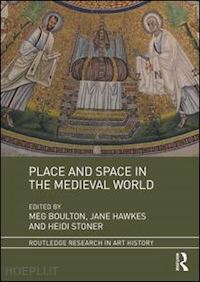Table of Contents 1 The Secret Language of Movement: Interior Encounters with Space and Transition during Medieval Pilgrimage Martin Locker 2 Distance and Embrace: Spatial Conditions of Access to the Volto Santo of Lucca Ika Matyjaszkiewicz 3 Cave of Hermits, Cave of Cult: Saints Andrew-Zoerard and Benedict and the Sacralization of the Medieval Hungarian Landscape Karen Stark 4 Processes of Religious Change in Late Iron Age Gotland: Rereading, Spatialization and Enculturation Luke John Murphy5 Planting the Cross in Anglo-Saxon England Jane Hawkes 6 "How Deserted Lies the City, Once So Full of People": the Reclamation of Intramural Space in Anglo-Saxon Literature Michael D. J. Bintley 7 From the Space of the World to the Space of the Local: The Two Maps of Thomas Elmham Beth Kaneko 8 The Broighter Hoard: Mythology, Misrepresentation and Mystery Aideen M. Ireland 9 The Ambiguity in Medieval Depictions of Abraham’s Bosom in the Areas and Spaces of the Christian Afterlife Maria R. Grasso 10 Common Space or Cleft places? The Example of Beaulieu-sur-Dordogne, an Architectural and Figured Space Élise Haddad 11 "And on the woghe wrytyn this was": Locating Three Dead Kings in the Parish Church Wall-Paintings of The Three Living and The Three Dead Rebecca Pope 12 Fictive Architecture and Pictorial Place: Altichiero da Zevio’s Oratory of St George in Padua (c.1379?1384) Livia Lupi 13 Defining Difference or Connecting Spaces? Similarity and Meaning in the Arian Baptistery, Ravenna Sam Barber 14 Heaven and Hall: Space and Place in Anglo-Saxon England Heidi Stoner 15 The Vanishing Spaces of Islamic Courts (Ninth–Tenth Centuries) Aimone Grossato 16 The Forming of an Apocalyptic Metageography: Muslim and Byzantine Apocalyptic Traditions and the Developing of a Shared Geographical Worldview Francesco Furlan 17 World Maps and Waterways: Place and Space in the Beatus Mappaemundi Emily Goetsch 18 The Bible as Map, On seeing God, Finding the way: Pilgrimage and Exegesis in Adomnán and Bede Jennifer O’Reilly











